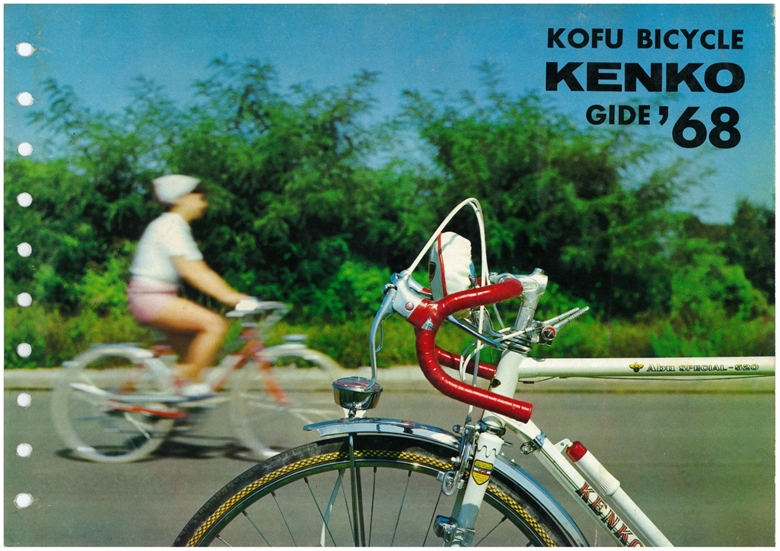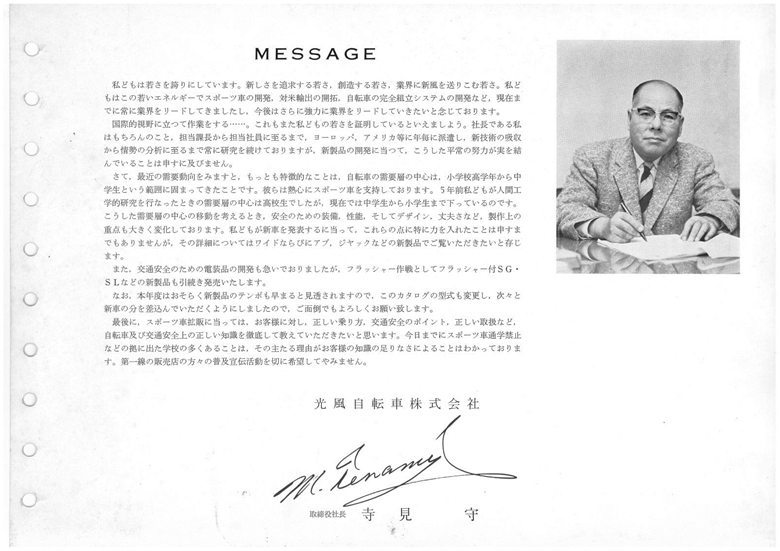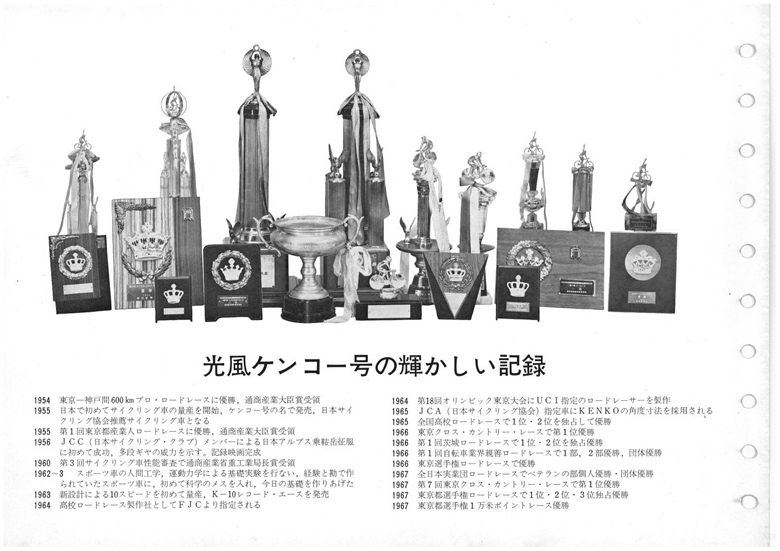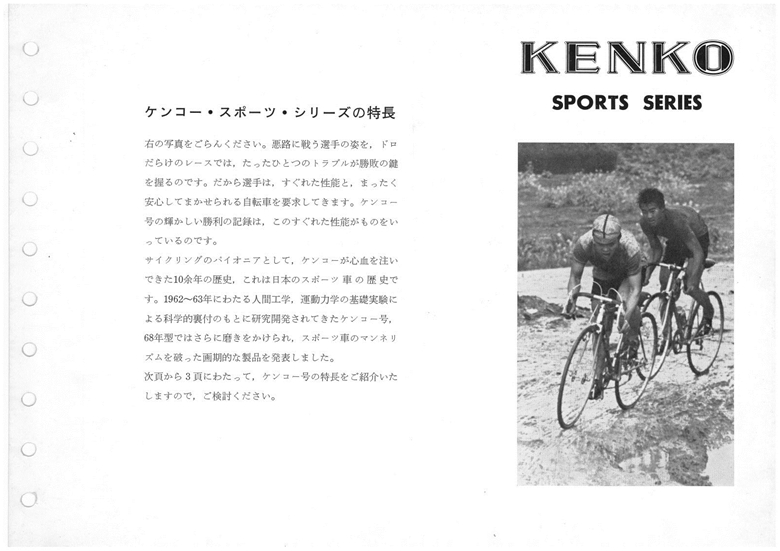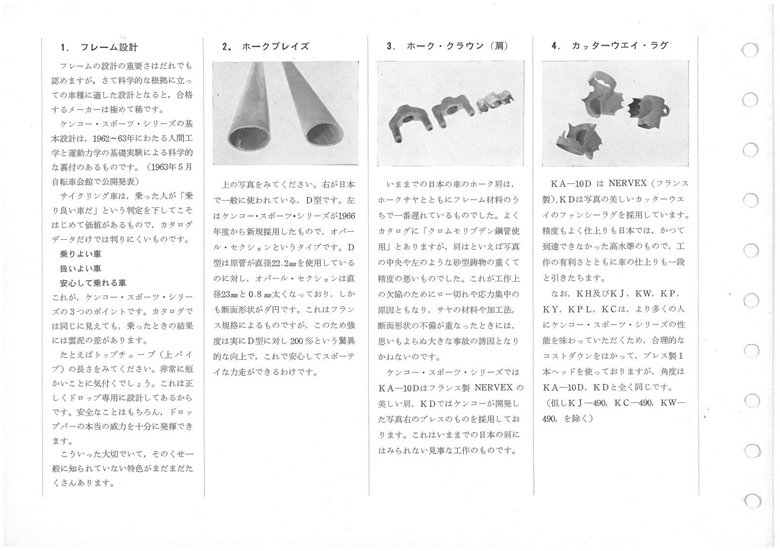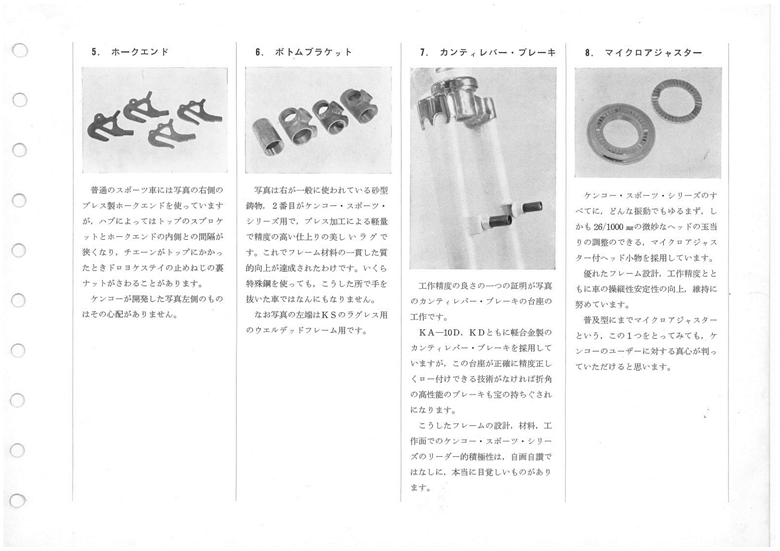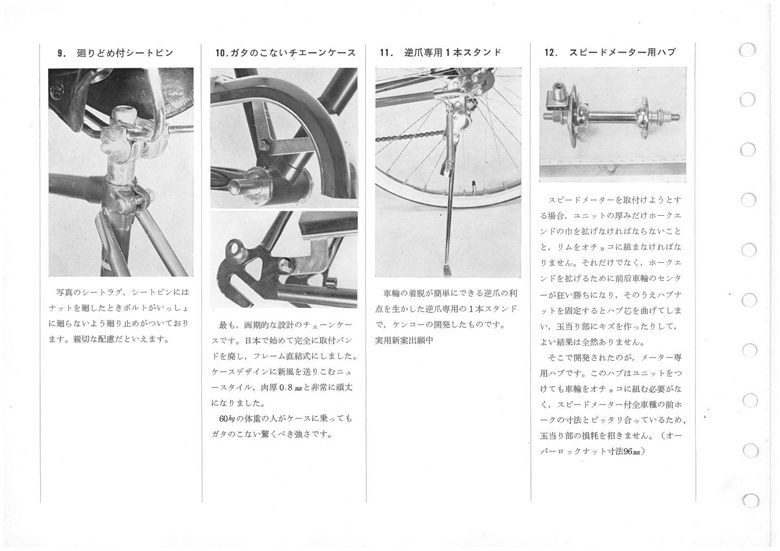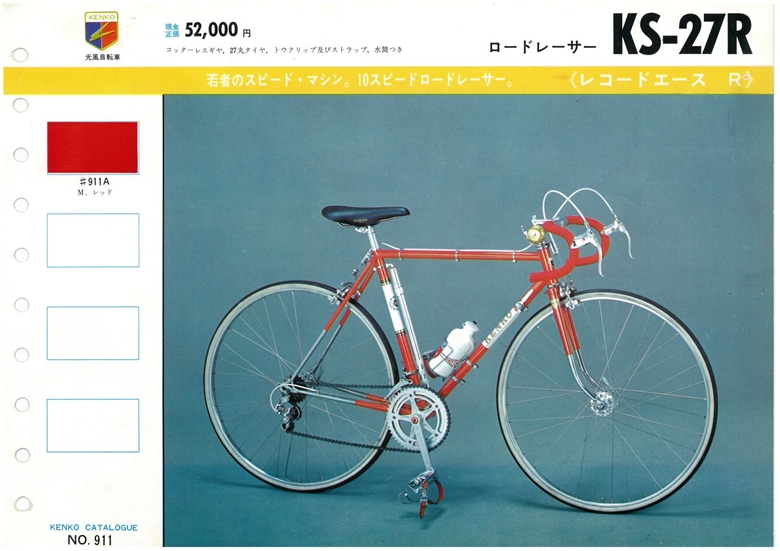
|
The catalog introduced each models from here.
The road-racing model KS-27R appeared first. It was equipped with domestic, highest grade racing parts.
The crank was Sugino Mighty-compe (PCD 151mm, minimum teeth 44T) which didn't have a hole on the arm.
Rear derailleur was early model of Suntour V; front derailleur was a top-normal model Suntour Spurt:
brake was a Dia-compe centre-pull: saddle was Fujita Seamless which didn't have cover on the plastic:
stem was Nitto Dynamic, therefore handlebar must have been Nitto, too: pedal was Mikashima Unique-road.
Until early 1970s, high grade road-racing bicycle of each maker were composed of almost same parts.
A monthly salary for new college graduates of those days was about 30,000 yen.
So if the price is converted into present value, it will be 350,000 yen. The price was high after all.
|
|
